Wenjie Ruan
TAIJI: Textual Anchoring for Immunizing Jailbreak Images in Vision Language Models
Mar 13, 2025Abstract:Vision Language Models (VLMs) have demonstrated impressive inference capabilities, but remain vulnerable to jailbreak attacks that can induce harmful or unethical responses. Existing defence methods are predominantly white-box approaches that require access to model parameters and extensive modifications, making them costly and impractical for many real-world scenarios. Although some black-box defences have been proposed, they often impose input constraints or require multiple queries, limiting their effectiveness in safety-critical tasks such as autonomous driving. To address these challenges, we propose a novel black-box defence framework called \textbf{T}extual \textbf{A}nchoring for \textbf{I}mmunizing \textbf{J}ailbreak \textbf{I}mages (\textbf{TAIJI}). TAIJI leverages key phrase-based textual anchoring to enhance the model's ability to assess and mitigate the harmful content embedded within both visual and textual prompts. Unlike existing methods, TAIJI operates effectively with a single query during inference, while preserving the VLM's performance on benign tasks. Extensive experiments demonstrate that TAIJI significantly enhances the safety and reliability of VLMs, providing a practical and efficient solution for real-world deployment.
FALCON: Fine-grained Activation Manipulation by Contrastive Orthogonal Unalignment for Large Language Model
Feb 03, 2025Abstract:Large language models have been widely applied, but can inadvertently encode sensitive or harmful information, raising significant safety concerns. Machine unlearning has emerged to alleviate this concern; however, existing training-time unlearning approaches, relying on coarse-grained loss combinations, have limitations in precisely separating knowledge and balancing removal effectiveness with model utility. In contrast, we propose Fine-grained Activation manipuLation by Contrastive Orthogonal uNalignment (FALCON), a novel representation-guided unlearning approach that leverages information-theoretic guidance for efficient parameter selection, employs contrastive mechanisms to enhance representation separation, and projects conflict gradients onto orthogonal subspaces to resolve conflicts between forgetting and retention objectives. Extensive experiments demonstrate that FALCON achieves superior unlearning effectiveness while maintaining model utility, exhibiting robust resistance against knowledge recovery attempts.
A Black-Box Evaluation Framework for Semantic Robustness in Bird's Eye View Detection
Dec 19, 2024



Abstract:Camera-based Bird's Eye View (BEV) perception models receive increasing attention for their crucial role in autonomous driving, a domain where concerns about the robustness and reliability of deep learning have been raised. While only a few works have investigated the effects of randomly generated semantic perturbations, aka natural corruptions, on the multi-view BEV detection task, we develop a black-box robustness evaluation framework that adversarially optimises three common semantic perturbations: geometric transformation, colour shifting, and motion blur, to deceive BEV models, serving as the first approach in this emerging field. To address the challenge posed by optimising the semantic perturbation, we design a smoothed, distance-based surrogate function to replace the mAP metric and introduce SimpleDIRECT, a deterministic optimisation algorithm that utilises observed slopes to guide the optimisation process. By comparing with randomised perturbation and two optimisation baselines, we demonstrate the effectiveness of the proposed framework. Additionally, we provide a benchmark on the semantic robustness of ten recent BEV models. The results reveal that PolarFormer, which emphasises geometric information from multi-view images, exhibits the highest robustness, whereas BEVDet is fully compromised, with its precision reduced to zero.
Trustworthy Text-to-Image Diffusion Models: A Timely and Focused Survey
Sep 26, 2024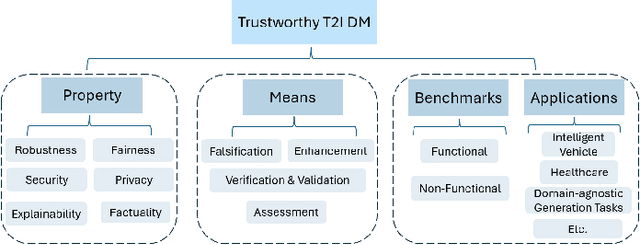
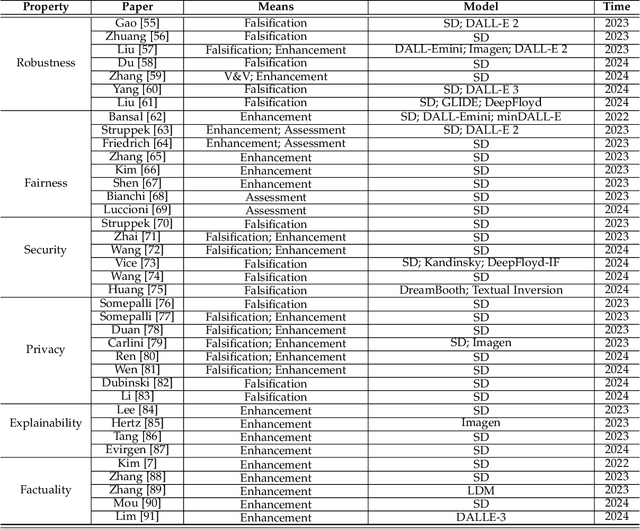
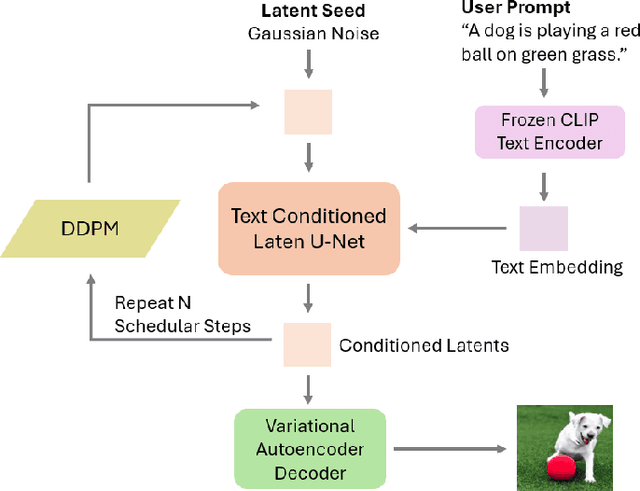

Abstract:Text-to-Image (T2I) Diffusion Models (DMs) have garnered widespread attention for their impressive advancements in image generation. However, their growing popularity has raised ethical and social concerns related to key non-functional properties of trustworthiness, such as robustness, fairness, security, privacy, factuality, and explainability, similar to those in traditional deep learning (DL) tasks. Conventional approaches for studying trustworthiness in DL tasks often fall short due to the unique characteristics of T2I DMs, e.g., the multi-modal nature. Given the challenge, recent efforts have been made to develop new methods for investigating trustworthiness in T2I DMs via various means, including falsification, enhancement, verification \& validation and assessment. However, there is a notable lack of in-depth analysis concerning those non-functional properties and means. In this survey, we provide a timely and focused review of the literature on trustworthy T2I DMs, covering a concise-structured taxonomy from the perspectives of property, means, benchmarks and applications. Our review begins with an introduction to essential preliminaries of T2I DMs, and then we summarise key definitions/metrics specific to T2I tasks and analyses the means proposed in recent literature based on these definitions/metrics. Additionally, we review benchmarks and domain applications of T2I DMs. Finally, we highlight the gaps in current research, discuss the limitations of existing methods, and propose future research directions to advance the development of trustworthy T2I DMs. Furthermore, we keep up-to-date updates in this field to track the latest developments and maintain our GitHub repository at: https://github.com/wellzline/Trustworthy_T2I_DMs
Boosting Adversarial Training via Fisher-Rao Norm-based Regularization
Mar 26, 2024Abstract:Adversarial training is extensively utilized to improve the adversarial robustness of deep neural networks. Yet, mitigating the degradation of standard generalization performance in adversarial-trained models remains an open problem. This paper attempts to resolve this issue through the lens of model complexity. First, We leverage the Fisher-Rao norm, a geometrically invariant metric for model complexity, to establish the non-trivial bounds of the Cross-Entropy Loss-based Rademacher complexity for a ReLU-activated Multi-Layer Perceptron. Then we generalize a complexity-related variable, which is sensitive to the changes in model width and the trade-off factors in adversarial training. Moreover, intensive empirical evidence validates that this variable highly correlates with the generalization gap of Cross-Entropy loss between adversarial-trained and standard-trained models, especially during the initial and final phases of the training process. Building upon this observation, we propose a novel regularization framework, called Logit-Oriented Adversarial Training (LOAT), which can mitigate the trade-off between robustness and accuracy while imposing only a negligible increase in computational overhead. Our extensive experiments demonstrate that the proposed regularization strategy can boost the performance of the prevalent adversarial training algorithms, including PGD-AT, TRADES, TRADES (LSE), MART, and DM-AT, across various network architectures. Our code will be available at https://github.com/TrustAI/LOAT.
Towards Fairness-Aware Adversarial Learning
Feb 27, 2024Abstract:Although adversarial training (AT) has proven effective in enhancing the model's robustness, the recently revealed issue of fairness in robustness has not been well addressed, i.e. the robust accuracy varies significantly among different categories. In this paper, instead of uniformly evaluating the model's average class performance, we delve into the issue of robust fairness, by considering the worst-case distribution across various classes. We propose a novel learning paradigm, named Fairness-Aware Adversarial Learning (FAAL). As a generalization of conventional AT, we re-define the problem of adversarial training as a min-max-max framework, to ensure both robustness and fairness of the trained model. Specifically, by taking advantage of distributional robust optimization, our method aims to find the worst distribution among different categories, and the solution is guaranteed to obtain the upper bound performance with high probability. In particular, FAAL can fine-tune an unfair robust model to be fair within only two epochs, without compromising the overall clean and robust accuracies. Extensive experiments on various image datasets validate the superior performance and efficiency of the proposed FAAL compared to other state-of-the-art methods.
ProTIP: Probabilistic Robustness Verification on Text-to-Image Diffusion Models against Stochastic Perturbation
Feb 23, 2024



Abstract:Text-to-Image (T2I) Diffusion Models (DMs) have shown impressive abilities in generating high-quality images based on simple text descriptions. However, as is common with many Deep Learning (DL) models, DMs are subject to a lack of robustness. While there are attempts to evaluate the robustness of T2I DMs as a binary or worst-case problem, they cannot answer how robust in general the model is whenever an adversarial example (AE) can be found. In this study, we first introduce a probabilistic notion of T2I DMs' robustness; and then establish an efficient framework, ProTIP, to evaluate it with statistical guarantees. The main challenges stem from: i) the high computational cost of the generation process; and ii) determining if a perturbed input is an AE involves comparing two output distributions, which is fundamentally harder compared to other DL tasks like classification where an AE is identified upon misprediction of labels. To tackle the challenges, we employ sequential analysis with efficacy and futility early stopping rules in the statistical testing for identifying AEs, and adaptive concentration inequalities to dynamically determine the "just-right" number of stochastic perturbations whenever the verification target is met. Empirical experiments validate the effectiveness and efficiency of ProTIP over common T2I DMs. Finally, we demonstrate an application of ProTIP to rank commonly used defence methods.
Building Guardrails for Large Language Models
Feb 02, 2024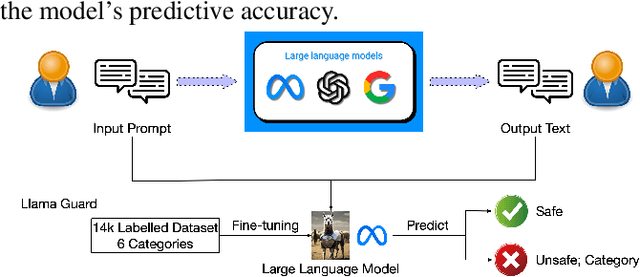
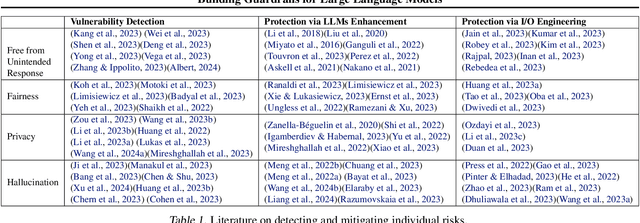


Abstract:As Large Language Models (LLMs) become more integrated into our daily lives, it is crucial to identify and mitigate their risks, especially when the risks can have profound impacts on human users and societies. Guardrails, which filter the inputs or outputs of LLMs, have emerged as a core safeguarding technology. This position paper takes a deep look at current open-source solutions (Llama Guard, Nvidia NeMo, Guardrails AI), and discusses the challenges and the road towards building more complete solutions. Drawing on robust evidence from previous research, we advocate for a systematic approach to construct guardrails for LLMs, based on comprehensive consideration of diverse contexts across various LLMs applications. We propose employing socio-technical methods through collaboration with a multi-disciplinary team to pinpoint precise technical requirements, exploring advanced neural-symbolic implementations to embrace the complexity of the requirements, and developing verification and testing to ensure the utmost quality of the final product.
ReRoGCRL: Representation-based Robustness in Goal-Conditioned Reinforcement Learning
Dec 19, 2023



Abstract:While Goal-Conditioned Reinforcement Learning (GCRL) has gained attention, its algorithmic robustness against adversarial perturbations remains unexplored. The attacks and robust representation training methods that are designed for traditional RL become less effective when applied to GCRL. To address this challenge, we first propose the Semi-Contrastive Representation attack, a novel approach inspired by the adversarial contrastive attack. Unlike existing attacks in RL, it only necessitates information from the policy function and can be seamlessly implemented during deployment. Then, to mitigate the vulnerability of existing GCRL algorithms, we introduce Adversarial Representation Tactics, which combines Semi-Contrastive Adversarial Augmentation with Sensitivity-Aware Regularizer to improve the adversarial robustness of the underlying RL agent against various types of perturbations. Extensive experiments validate the superior performance of our attack and defence methods across multiple state-of-the-art GCRL algorithms. Our tool ReRoGCRL is available at https://github.com/TrustAI/ReRoGCRL.
Reward Certification for Policy Smoothed Reinforcement Learning
Dec 12, 2023


Abstract:Reinforcement Learning (RL) has achieved remarkable success in safety-critical areas, but it can be weakened by adversarial attacks. Recent studies have introduced "smoothed policies" in order to enhance its robustness. Yet, it is still challenging to establish a provable guarantee to certify the bound of its total reward. Prior methods relied primarily on computing bounds using Lipschitz continuity or calculating the probability of cumulative reward above specific thresholds. However, these techniques are only suited for continuous perturbations on the RL agent's observations and are restricted to perturbations bounded by the $l_2$-norm. To address these limitations, this paper proposes a general black-box certification method capable of directly certifying the cumulative reward of the smoothed policy under various $l_p$-norm bounded perturbations. Furthermore, we extend our methodology to certify perturbations on action spaces. Our approach leverages f-divergence to measure the distinction between the original distribution and the perturbed distribution, subsequently determining the certification bound by solving a convex optimisation problem. We provide a comprehensive theoretical analysis and run sufficient experiments in multiple environments. Our results show that our method not only improves the certified lower bound of mean cumulative reward but also demonstrates better efficiency than state-of-the-art techniques.
 Add to Chrome
Add to Chrome Add to Firefox
Add to Firefox Add to Edge
Add to Edge